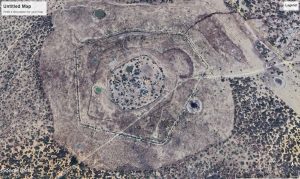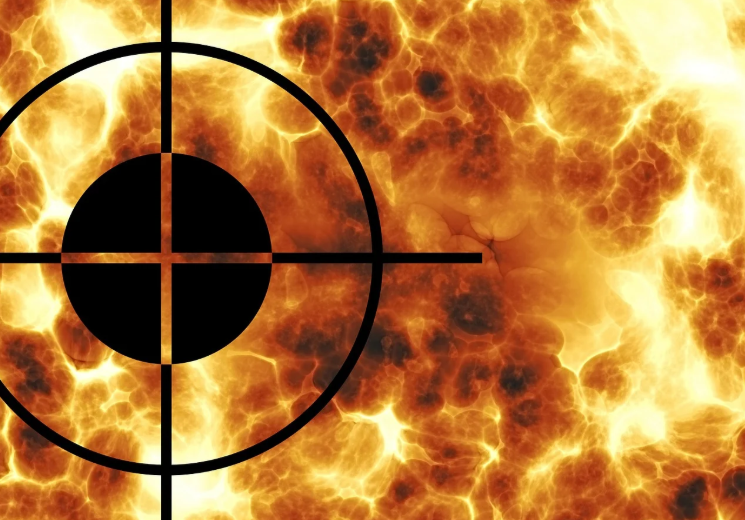Helmoed Römer Heitman
ABSTRACT: Helmoed Romer Heitman in Nongqai, Irregular Forces, Insurgencies in Africa, International Terrorism, Irregular Forces in Africa
IRREGULAR FORCES – INSURGENCIES IN AFRICA
Helmoed Römer Heitman – National Security Correspondent, Nongqai
Introduction
There is an unfortunate and dangerous tendency to still think of insurgents in Africa as a sort of lightly armed rabble, poorly led and poorly trained. That has not been the case for quite some time. The days when security forces – or contracted mercenaries – could simply mount a few machineguns on jeeps and successfully go guerrilla hunting are long gone. The reality is that many insurgencies have become guerrilla forces vastly more dangerous than previously. Many are led by former regular army officers or guerrilla leaders with years or even decades of experience. They are also better trained and better armed – ‘technicals’ with 14.5 mm heavy machineguns, twin 23 mm cannon, 106 mm recoilless guns and 107 mm multiple rocket launchers. And they are adopting new tactics such as suicide bombings and car bombs, and new technologies, including drones.
The Nature of the Irregular Forces Threat
And they will, as in the recent past, adopt and adapt tactics, techniques and technologies used in the Middle East and elsewhere. It is salutary to note that some years ago the otherwise almost stone age Lord’s Resistance Army had basic COMINT – they monitored mobile telephone traffic and took any sudden increase as an indication that an Army unit had entered the area – troops calling home – so the time had come to move on.
The future will see more small drones used for reconnaissance and for command and control (linked to an operations room as in Iraq), larger drones armed with rockets for stand-off attack (as developed by Hamas and Hezbollah) and weapons such as anti-tank missiles (guerrillas in the Sinai crippled an Egyptian Navy patrol boat with such a missile) as well as newer generation shoulder-launched anti-aircraft missiles. And, of course, all self-respecting guerrilla groups use satellite phones and email for communications and some will develop cyber-attack capability.
But none of that necessarily demonstrates how dangerous such groups have become. That can be illustrated by some attacks of the recent past on which information has become available:

The Mali Army base at Dioura was overrun on 23 May 2025 by guerrillas of Jama’at Nasr al-Islam wal Muslimin, using drones for command and control during the attack

The Kenyan base at Kulbiyow was overrun by Al Shabaab guerrillas on 27 January 2017
Haskanita: At 19h30 on 30 September 2007 some 1 000 guerrillas attacked the Nigerian AMIS company base at Haskanita in Darfur. Weapons included heavy machineguns, mortars and 106 mm recoilless guns, the latter used to destroy the communications centre and some APCs. That done, and using the machineguns suppress the defenders, they overran the base.
Ndjamena: In February 2008 some 2 000 guerrillas in some 300 technicals moved 1 000 km from Darfur to Ndjamena, defeating army elements near Oum Hadjer, 400 km from Ndjamena and at Massquet, 80 km from the city. They gained control of parts of Ndjamena on 2 February, only withdrawing after two days of fighting. The attack failed in part because French troops held the airport, which allowed the Chad Air Force to support the ground forces.
Omdurman: On 10 May 2008 some 1 200 Justice and Equality Movement guerrillas moving in at least 130 technicals (some with twin 14.5 mm machineguns, 106 mm recoilless guns and 107 mm multiple rocket launchers) attacked Omdurman. On their approach they shot down a MiG-29 flown by a Russian pilot that had attempted to attack them, and overran the airbase at Wadi-Sayedna. It took the Sudanese army several days to drive them out of Omdurman.
Mali: On 16 January 2012 guerrillas of Tuareg and Islamist groups began an operation to seize control of at least the northern half of Mali, which they had achieved by 6 April. In the process they overran several army bases and captured equipment including armoured vehicles that they promptly put to use. They were finally driven back by a French intervention force that included mechanized elements and enjoyed air support. The rebellion has continued since the draw down of French forces.
Bangui: On 23 March 2013 elements of an 8 000 strong Seleka guerrilla force attacked Bangui. Equipment included brand new technicals armed with 14.5 mm machineguns, 73 mm SPG-9 recoilless guns and 30 mm grenade launchers. They suffered heavy casualties in clashes with a 200-strong South African force deployed to protect a training team in the country, but forced it back into its base before proposing a cease fire. Interesting was the transformation of this guerrilla force: in December 2012 it had been a classic rag-tag force with dilapidated vehicles and a light weapons. By March 2013 they were in standard camouflage with the new technicals.
Maidiguri: On 25 January 2015 a force of several hundred Boko Haram guerrillas attacked the Nigerian Army base in Maidiguri, inflicting casualties and damaging large parts of the town before being repelled. They captured the nearby town of Monguno and attacked Maidiguri again on 31 January. They were only expelled from Monguno on 17 February
El Adde: At 06h30 on 15 January 2016 al Shabaab guerrillas detonated an APC filled with explosives at the main gate of the Kenyan AMISOM base at El Adde in Somalia. That damaged the command and communications buildings and killed a large number of soldiers. Some 300 guerrillas then attacked supported by fire from men armed with RPGs and some heavier rocket launchers and technicals armed with 14.5 mm machineguns and 106 mm recoilless rifles. They neutralized several Panhard AML armoured cars and some APCs and quickly overran the base, driving the garrison out. Some 140 Kenyan soldiers were killed and 12 were captured.
Kulbiyow: At 05h00 on 27 January 2017 a force of 200 or more Al Shabaab guerrillas attacked the AMISMOM base at Kulbiyou in Somalia. A surveillance drone had previously detected guerrillas and the Kenyan garrison had shelled them, but others were not noticed until in the immediate area. The attack opened with two vehicle bombs, one of which was able to penetrate into the base and caused several casualties. Guerrillas then stormed the base, supported by fire from technicals and also detonated a third vehicle bomb inside the base. The survivors of the garrison were driven out after 90 minutes of fighting in which more than 60 had been killed and some captured. A relief force was delayed by mines that laid previously by the guerrillas.
Similar guerrilla attacks have continued since then all over the Sahel and beginning to impact countries to the south. Army bases have been overrun in Burkina Faso, Mali and Niger, and the guerrillas are increasingly using motorcycles, presenting defenders with scattered, fast-moving targets difficult to engage in the time available.
The insurgency in Mozambique has not reached similar levels of intensity but deserves more attention than thus far, not least because their use of boats to attack islands sets the scene for maritime attacks as in West Africa.
Irregular Forces in Africa
There are several different types of irregular forces involved in conflicts in Africa, including insurgents or what might be termed ‘home grown’ guerrillas, guerrilla type forces supported or even controlled by a neighbouring country, criminal groups with paramilitary capabilities, and irregular forces established or contracted by countries to bolster their security forces.
*

The Nongqai National Security Correspondent and Columnist Helmoed Römer Heitman has written and lectured on defence since 1978. He served in the SA Army reserve from 1970 to 1996, finally at the Long-Term Planning Division at Defence Headquarters. He has consulted to the Ministry of Defence, the Defence Force, political parties and defence industry companies, worked with the non-statutory forces and political parties in 1991/94 and during the 1995/96 Defence White Paper drafting and served on a work group of the 1997/98 Defence Review. He participated in Army Vision 2020 and doctrine development for the Rooivalk attack helicopter in 2005/06, drew up an airlift study for the Ministry of Defence in 2009, served on the Defence Review Committee in 2011/13, worked on through-life capability management in 2015/17, helped edit the Defence Acquisition Handbook and drafted the defence industry strategy in 2017, an intervention plan in 2019 and parts of the Aerospace and Defence Industry Master Plan in 2020.
He has also briefed work sessions of the Security Cluster Directors General, the Chief of the Defence Force, the GOC Special Forces, the Standing Maritime Committee of the Inter-State Defence and Security Committee, the French Ministry of Defence and the German Army Combat Reconnaissance School. Helmoed Heitman holds economics and public administration degrees (University of Cape Town), an MA (War Studies; King’s College, University of London) and management diplomas (Stellenbosch University Graduate School of Business) and passed the junior staff course of the SA Army College.
*

https://www.nongqai.org/helmoed-romer-heitman-irregular-forces-insurgencies-in-africa/ is required reading and a source of information on Irregular Forces in Africa.
Helmoed Heitman has written an excellent in-depth article on this subject matter, and shines a sharp spotlight on the activities of Irregular Forces and Terrorist Groups in Africa.